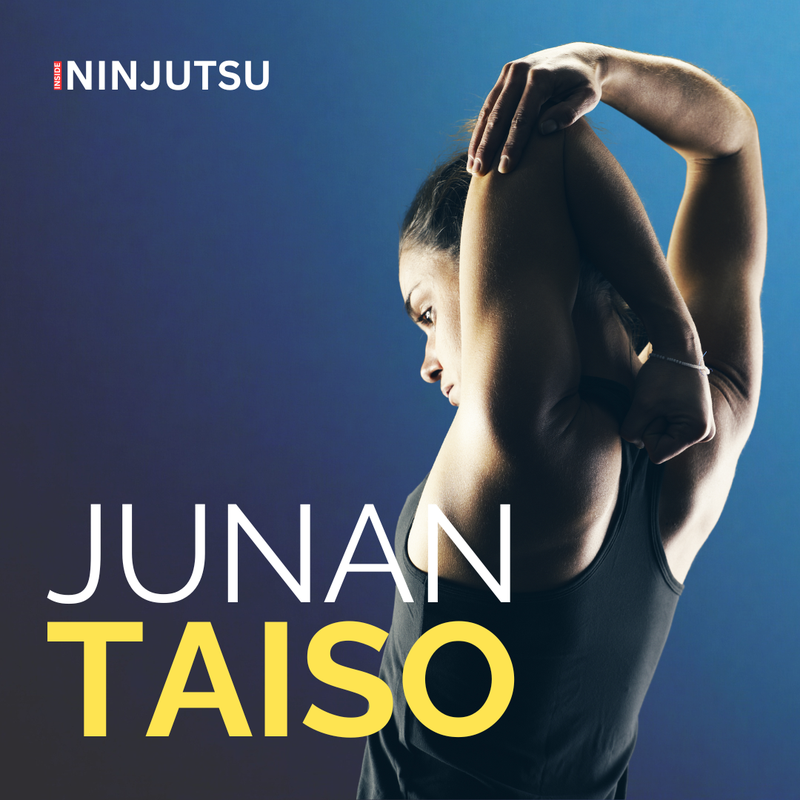
The Role of Stretching in Martial Arts
PUBLISHED 11 OCT 2025
Flexibility is one of the most visible hallmarks of martial arts — from the high kicks of karateka to the deep stances of taijutsu practitioners. Yet, while stretching and warm-ups are part of nearly every modern dojo routine, they are not originally a feature of classical Japanese martial arts. The ancient traditions of the samurai and ninja were forged in times when training was designed for immediate survival, not gradual preparation.
Respected martial artist and scholar Dr Kacem Zoughari explains:
“The idea of warming up, those kind of exercise you do before starting a class. Well, first of all, you need to understand that in classical martial art doesn't exist. Warm me up doesn't exist. In classical martial there is no warming up exercise. There is this aspect of tanren, conditioning and reinforcement.”
In other words, what we now know as “warming up” evolved later, as martial arts adapted to a changing world. Today, a warm-up and some light stretching are common in every class, preparing the body for movement and reducing the risk of injury — even if such practices were absent during Japan’s warring states period.
Understanding Stretching
Stretching increases range of motion, aids body awareness, and enhances posture and control — all vital elements for executing techniques, maintaining kamae (combat postures), and developing balance. However, as Dr Zoughari warns, stretching must be approached with care:
“You need to understand that flexibility can be not good for the body, if you don't do it in the right way. You have to listen your body.”
There are two main types of stretching: static and dynamic.
- Dynamic stretching keeps the body in motion, gradually extending the range of movement through controlled, repetitive actions. This form is more suitable before a session, as it raises the heart rate and primes the muscles for explosive activity.
-
Static stretching involves holding a stretch at the end of a muscle’s range, promoting relaxation and lengthening. It’s best done after training to return muscles to their natural length and encourage recovery.
For those seeking to develop flexibility, holding a stretch for 15–30 seconds while exhaling slowly helps to relax and lengthen targeted muscles. The goal is comfort and awareness — not forcing the body into pain.
Beyond Flexibility: Strength and Mobility
Flexibility alone is not enough for martial artists. A practitioner who can drop into the splits may still struggle to lift their leg above waist height without strength. True martial readiness combines flexibility, strength, and mobility — the ability to move powerfully and with control through one’s full range of motion. Resistance bands and controlled lifts within the stretch can help develop this functional strength.
As Dr Masaaki Hatsumi notes in Ninjutsu: History and Tradition:
“Stretching the leg muscles for limberness and increasing the flexibility of the hip joints are crucial for mobility, proper support of the body and powerful leaps & jumps.”
Hatsumi has also demonstrated sequences such as Ryu Tai Undo — or “Dragon Body Exercises” — incorporating movements like the butterfly stretch, box splits, and extended leg reaches. These routines help build a supple yet strong body capable of swift transitions between stances and techniques.
Stretching the Mind and Spirit
Ultimately, flexibility in martial arts extends beyond the muscles. Dr Kacem Zoughari reminds us that the practice of stretching holds a deeper significance:
“Stretching means to stretch your mind, to stretch yourself.”
A truly flexible warrior adapts not just in body, but in thought and spirit. Physical stretching becomes a metaphor for growth — expanding limits, softening rigidity, and finding strength through fluidity.
Tezuka Sensei demonstrating a series of flexibility exercises






Add comment
Comments